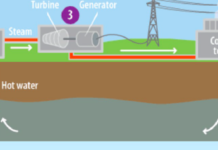Sammy could feel her chest tightening. Suddenly, she realized that she could no longer breathe. What had started out as a normal school day for 11-year-old Sammy Zuehlke, dramatically changed when she experienced an asthma attack.

“At first I didn’t know what was going on,” said Sammy. “But when I realized I couldn’t breathe I was so scared, I thought I was going to die.” Teachers rushed Sammy to the hospital and, although she was alright, others have not been quite so lucky.
Recent studies done by top universities throughout the country have led many scientists and medical pro- fessionals to believe that there is a direct correlation between the increased amount of pollution in the air and the escalating percentage of the population affected by asthma.
Asthma is a chronic or long-lasting, inflammatory disease of the airways that affects over 60 million people worldwide. According to the Asthma and Allergy Foundation of America (AAFA), many symptoms of asthma can be caused by irritants or allergens that are inhaled into the lungs, resulting in inflamed, clogged and constricted airways. Patients who have asthma often experience this kind of temporary closing of the airways, which prevents air from entering their lungs. This lack of oxygen often causes wheezing, breathlessness and in severe cases death. The AAFA reports nearly 11 asthma-related deaths a day, resulting in nearly 4,000 deaths each year.
According to studies from numerous U.S. universities, including the University of North Carolina at Chapel Hill, Harvard University, and the University of Illinois at Chicago, the number of hospitalizations due to asthma related reasons has increased by an extraordinary 4.5% in a 10 year period. In that same amount of time death rates from asthma have risen 31%, with mortality rates of African Americans nearly four times those of Caucasians. Although the root causes for this increased asthma prevalence is under debate, many specialists seem to believe it is a result of a “domino” effect caused by an increase in air pollutants.
The U.S. Clean Air Act of 1970 established six “criteria” pollutants: sulfur dioxide, nitrogen oxides, carbon monoxide, ozone, and particulate matter and lead. There is very little evidence of association between asthma rates and exposure to lead or carbon dioxide; however, numerous studies have shown there is evidence of association with the remaining four.
Increases in particulate matter, or the mixture of tiny particles and aerosols that are suspended in the air we breathe, are associated with increased respiratory mortality and hospital admissions of asthma. The current U.S. standard for particulate matter is 150 micrograms per cubic meter of air (µg/m3)in a 24-hour period. Numerous epidemiological studies done in the late 1990s showed that the lowest level at which asthmatics will be affected is above 50 µg/m3 for particulate matter. Researchers at Harvard’s School of Public Health also found that with each 10 µg/m3 increase in particulate matter, there was a 3% increase in asthma attacks, bronchodilator use and lower respiratory symptoms.
In addition, researchers found that ozone is associated with hospitalizations for asthma, although it has been difficult to separate the effects of the ozone from the effects of acid aerosols—tiny particles that have very high acid levels.
A series of reviews published in 1996 by Michael D. Lebowitz, a pulmonary and critical care specialist from the University of Arizona, showed that the lowest level of ozone that will affect asthmatics is an ozone with 0.08 parts per million (ppm)—the ratio of potentially harmful chemicals to non-harmful ones found in our air. The current U.S. standard is 0.12 ppm in a 24-hour time period. A clinical study done by the U.S. Environmental Protection Agency (EPA) in 2001 has also revealed that asthmatics subject to a 0.16 ppm ozone have increased reactions to the pollutant compared to non-asthmatics.
Clinical studies done in 1995 by Hillel S. Koren, a consultant for Environmental Health LLC, showed that asthmatics have a harder time breathing after they have been exposed to both sulfur dioxide and nitrogen dioxide. A study involving various researchers found that participants with asthma exercising in areas with a sulfur dioxide concentration of 0.5 ppm experienced wheezing and had difficulty breathing.
Many scientists believe that these pollutants can also led to increased sensitivity to allergens. A study performed in 1996 by Ian Gilmour, a consultant for the EPA, showed that animals exposed to increased ozone, sulfur dioxide and nitrogen dioxide levels had heightened sensitivity to allergens. Researchers believe that this increased exposure to pollutants reduces lung response resulting in longer residence of the allergens in the lungs which in turn leads to increased asthma attacks; however, scientists are still researching this.
So do air pollutants really affect asthma? Well Sammy seems to think so. “I can definitely believe that pollutants could have triggered my asthma attack.” Casey Fogarty

This work is licensed under a Creative Commons Attribution-NonCommercial-NoDerivs 3.0 Unported License














This is a bad thing for a baby.
if air pollution can affect people with ashma than how can it affect the farm land
its scary that air pollution can effect someone so terribly
this is very bad